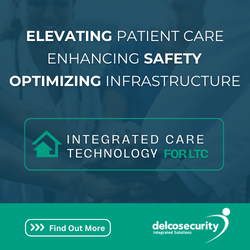***Registration Closes May 13th!***
The registration deadline for the 2015 BCCPA Annual conference is only a few weeks away and spaces are filling up quick! Over 350 people have already registered for what is considered to be one of the premiere continuing care sector events in Canada!
Leading up to the conference we will be offering sneak-previews into the many panel blue-ribbon panel discussion and speaker presentation. Read below for abstracts and bios of several workshops focused on Occupational Health & Safety (OHS) and creating safer workplaces.
Stay tuned in the coming weeks as we post more about the 24 panel discussions and presentations taking place at the2015 BCCPA Annual Conference.
For a full program at a glance or to register, click here.
Linking Person-Centred Care to Staff Safety: Training through a Dementia Lens
In British Columbia, long term care workers have one of the highest injury rates of any industry, at 9.2 per 100 person-years. Acts of responsive behaviour or violence are the second-leading cause of injuries among long term care workers. Consequently, health and safety initiatives within long term care organizations often have a violence prevention focus.
At the other end of the spectrum, there is a growing emphasis within the long term care sector to de-institutionalize care and shift to person-centred care models. Person-centred care “…emphasizes the uniqueness of the person with dementia, flexible care routines respectful of residents’ values, preferences and needs, the development of consistent and caring relationships, and an enriched social environment.”
Current research recognizes the link between person-centred care and safer work environments for care workers. Organizations that promote person-centred care report fewer incidents of staff being struck or verbally abused by residents. Moreover, staff that work in person-centred care environments report higher levels of job satisfaction. Encouraging a shift away from task-focused to person-focused care is therefore integral to improving the quality of life of individuals with dementia, and improving workplace safety for long term care workers.
In order to address the interrelated issues of staff safety and resident quality of life, SafeCare BC and the Alzheimer Society of B.C. partnered to deliver dementia care training to long term care workers in BC. This partnership built on earlier work done by WorkSafeBC and the Alzheimer Society of B.C. In this session, attendees will learn about the rationale behind the program, its origins, content focus and delivery method. In addition, the presenters will report on the effectiveness of the program, as well as valuable lessons learned.
Speakers:
Jennifer Lyle, Executive Director, SafeCare BC
 Jennifer Lyle is the executive director of the provincial long term care health and safety association, SafeCare BC. Prior to coming on board with SafeCare BC, Jennifer worked in a dual role as a healthcare practitioner and the Director of Operations for a Burnaby-based rehabilitation organization after graduating from Simon Fraser University with a Bachelor of Science degree. She later obtained her Master of Health Administration at the University of British Columbia.
Jennifer Lyle is the executive director of the provincial long term care health and safety association, SafeCare BC. Prior to coming on board with SafeCare BC, Jennifer worked in a dual role as a healthcare practitioner and the Director of Operations for a Burnaby-based rehabilitation organization after graduating from Simon Fraser University with a Bachelor of Science degree. She later obtained her Master of Health Administration at the University of British Columbia.
In addition to her studies, Jennifer has collaborated on research initiatives exploring the impact of care environments on elderly patients and care providers. She also sits on the board of directors for the British Columbia Association of Kinesiologists.
Jennifer is a strong advocate of a holistic approach to healthcare, and believes that creating positive, healthy environments for both providers and clients is key to effective, quality care. Out of the office, you can find Jennifer hiking and mountaineering in the backcountry.
Jennifer Stewart, M.A. – Manager, Advocacy & Education, Alzheimer Society of B.C.
 Jennifer Stewart is Manager of Advocacy & Education at the Alzheimer Society of B.C. Throughout her eight years with the Society, Jennifer has been involved in the development of a variety of programs. Jennifer’s current focus includes new initiatives to build Dementia-Friendly Communities throughout B.C., and to promote person-centred approaches to care. Jennifer is committed to ensuring individuals and families have the best life possible as they navigate the dementia journey. Jennifer holds a BA in Psychology from UBC and a MA in Gerontology from SFU.
Jennifer Stewart is Manager of Advocacy & Education at the Alzheimer Society of B.C. Throughout her eight years with the Society, Jennifer has been involved in the development of a variety of programs. Jennifer’s current focus includes new initiatives to build Dementia-Friendly Communities throughout B.C., and to promote person-centred approaches to care. Jennifer is committed to ensuring individuals and families have the best life possible as they navigate the dementia journey. Jennifer holds a BA in Psychology from UBC and a MA in Gerontology from SFU.
WorkSafeBC Inspections – What to Expect
The Issue
In 2013 workers working in long-term care facilities were injured more often than any other workers in any sector in British Columbia. Over 2,900 long-term care workers were injured and were collecting compensation benefits from WorkSafeBC that year.
What is WorkSafeBC Doing?
 Each year WorkSafeBC implements a High Risk Strategy which identifies sectors with a high risk of workplace injury. The strategy focuses prevention initiatives on identified areas of high risk in order to apply resources and effort where they will be most effective. In 2015 WorkSafeBC’s High Risk Strategy determined that employers and workplaces in the long-term care sector would be inspected by Prevention Officers as they are considered high risk workplaces.
Each year WorkSafeBC implements a High Risk Strategy which identifies sectors with a high risk of workplace injury. The strategy focuses prevention initiatives on identified areas of high risk in order to apply resources and effort where they will be most effective. In 2015 WorkSafeBC’s High Risk Strategy determined that employers and workplaces in the long-term care sector would be inspected by Prevention Officers as they are considered high risk workplaces.
Interactions between health care workers and residents pose the greatest risk of injury from the following hazards, including musculoskeletal injuries (52%), acts of violence or force (12%) and slips, trips and falls (12%). The primary focus of the strategy will be on the occupations providing direct resident care (health care assistants, licensed practical nurses and registered nurses) and on the interactions between the health care worker and the residents. Prevention Officers will apply a point of care inspectional process to aid in identifying these hazards.
What Can You Do to Prepare for an Inspection?
By attending this session you will learn about Point of Care inspections being conducted by Prevention Officers in long-term care facilities and what to expect if an officer shows up at your facility. WorkSafeBC resources you can use to help improve the safety of your workplace will also be reviewed.
Speakers:
Stephen Symon, Manager Industry & Labour Services, Health Care, Social Services and Education; WorkSafeBC
 For over 25 years Stephen has worked in the capacity of researching, developing and delivering programs to improve the health, safety and well-being of workers. The primary focus for the 20 plus years has been on worker health and safety in the health care sector. Stephen has a B.Sc. and M.Sc. in human physiology and biomechanics with additional training in disability management, occupational health and safety and ergonomics.
For over 25 years Stephen has worked in the capacity of researching, developing and delivering programs to improve the health, safety and well-being of workers. The primary focus for the 20 plus years has been on worker health and safety in the health care sector. Stephen has a B.Sc. and M.Sc. in human physiology and biomechanics with additional training in disability management, occupational health and safety and ergonomics.
For the past 15 years Stephen has been with WorkSafeBC and currently is in the role of Manager Industry and Labour Services focusing on injury prevention and return to work through a consultative and educational approach with health care employers and workers.
Most importantly Stephen is the father of two wonderful children, both girls, and the whole family enjoys anything and everything that gets them outdoors.
Chloe Eaton, Occupational Safety Officer Vancouver South, Richmond & Delta; WorkSafeBC
Chloe Eaton joined WorkSafeBC as an Ergonomist in 2005 and is a Canadian Certified Professional Ergonomist (CCPE). As an Ergonomist with WorkSafeBC, Chloe worked in the construction, healthcare, and manufacturing sectors. Her work with the health care industry included the development of publications relating to patient handling and providing feedback on the Provincial Safe Resident Handling Standards for Musculoskeletal Injury Prevention in BC. In 2013, Chloe changed roles and became an Occupational Safety Officer, inspecting the health care and social services sectors. Her education background includes a BSc. in Kinesiology from Simon Fraser University and an MSc. in Ergonomics from Loughborough University in the United Kingdom.
Safety in Our DNA: How Organizational Culture is harnessed to Create Safer Work Environments
Organizations in the continuing care sector face a significant challenge when it comes to workplace injuries. Every year, more than 120 000 work days are lost due to injury and over $23 million in claims are paid. Ultimately, this negatively impacts the ability of those working in the sector to provide quality, resident-centred care.
 Addressing workplace safety is a complex and multi-faceted issue. Improving one’s safety record therefore requires a holistic approach that stretches beyond just staff education and equipment purchases. Research into other areas of safety both within and outside of the healthcare industry have identified that so-called “high performing” organizations share common characteristics; specifically, they tend to demonstrate excellence in key areas relating to communication, interdisciplinary collaboration, learning, incident reporting, and management commitment to safety. In the literature, the presence of these elements has been loosely defined as having a “safety culture”.
Addressing workplace safety is a complex and multi-faceted issue. Improving one’s safety record therefore requires a holistic approach that stretches beyond just staff education and equipment purchases. Research into other areas of safety both within and outside of the healthcare industry have identified that so-called “high performing” organizations share common characteristics; specifically, they tend to demonstrate excellence in key areas relating to communication, interdisciplinary collaboration, learning, incident reporting, and management commitment to safety. In the literature, the presence of these elements has been loosely defined as having a “safety culture”.
Initiatives centred on creating a safety culture with respect to patient care have shown great promise. A cross-sectional analysis of 91 hospitals by Singer et al. (2009) demonstrated a positive link between an organization’s safety culture score and fewer adverse events and patient outcomes. An analysis of 179 hospitals by Mardon et al. (2010) found that organizations who scored higher on safety culture indices had lower rates of in-hospital complications and adverse events. Similarly, high-risk, high-reliability industries such as aviation and nuclear power have focused on creating cultures of safety to prevent worksite accidents and catastrophic systems failures (Nieva & Sorra, 2003).
What can the continuing care sector learn from these examples to create safer work environments for its workforce? How can the lessons learned from these initiatives be implemented in the continuing care sector? This session will endeavour to define safety culture in a healthcare context and explore the characteristics of organizations that lead to the development of such a culture. In addition, attendees will learn about real-life examples of organizations in the healthcare industry that have already implemented these practices and the ensuing impact on workplace safety as a result.
Speaker:
Jennifer Lyle, Executive Director, SafeCare BC
 Jennifer Lyle is the executive director of the provincial long term care health and safety association, SafeCare BC. Prior to coming on board with SafeCare BC, Jennifer worked in a dual role as a healthcare practitioner and the Director of Operations for a Burnaby-based rehabilitation organization after graduating from Simon Fraser University with a Bachelor of Science degree. She later obtained her Master of Health Administration at the University of British Columbia.
Jennifer Lyle is the executive director of the provincial long term care health and safety association, SafeCare BC. Prior to coming on board with SafeCare BC, Jennifer worked in a dual role as a healthcare practitioner and the Director of Operations for a Burnaby-based rehabilitation organization after graduating from Simon Fraser University with a Bachelor of Science degree. She later obtained her Master of Health Administration at the University of British Columbia.
In addition to her studies, Jennifer has collaborated on research initiatives exploring the impact of care environments on elderly patients and care providers. She also sits on the board of directors for the British Columbia Association of Kinesiologists.
Jennifer is a strong advocate of a holistic approach to healthcare, and believes that creating positive, healthy environments for both providers and clients is key to effective, quality care. Out of the office, you can find Jennifer hiking and mountaineering in the backcountry.






